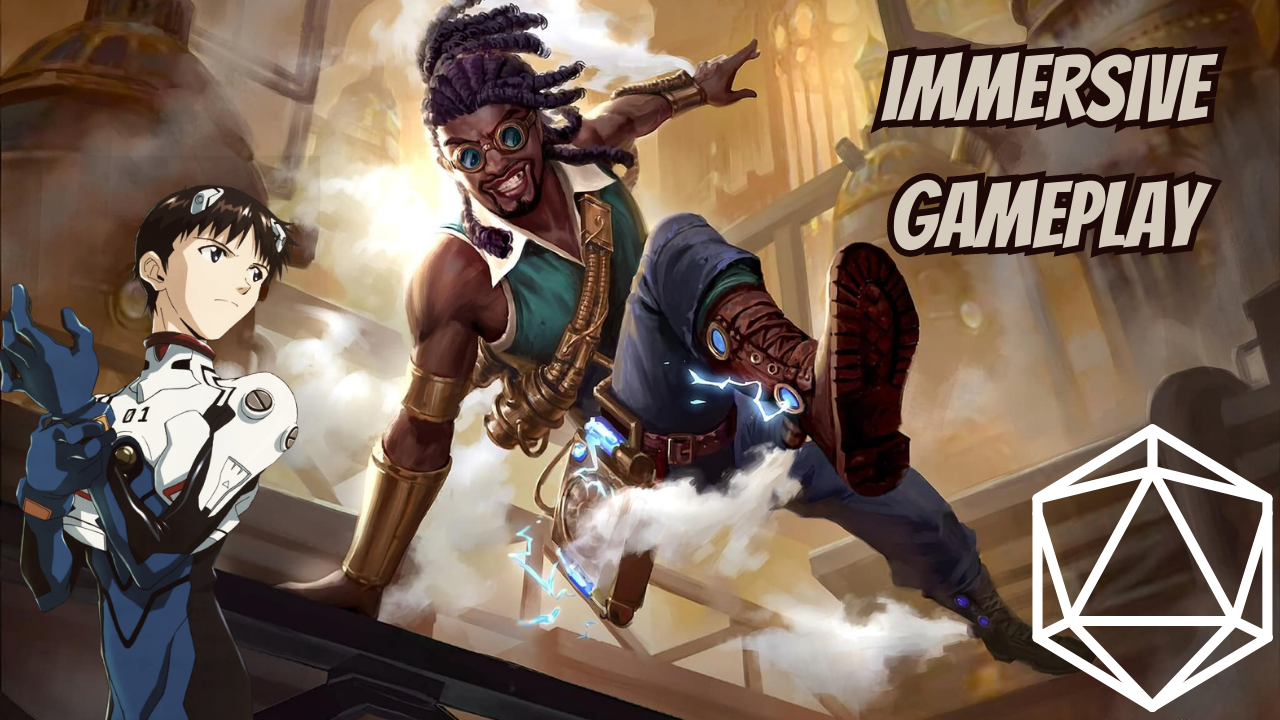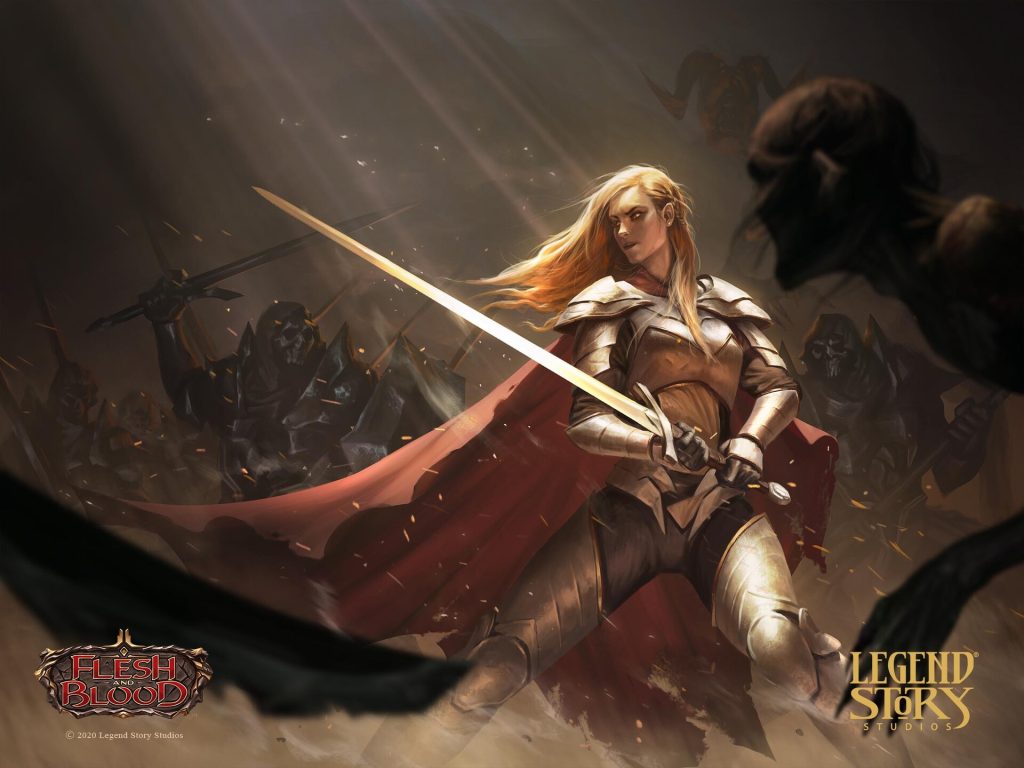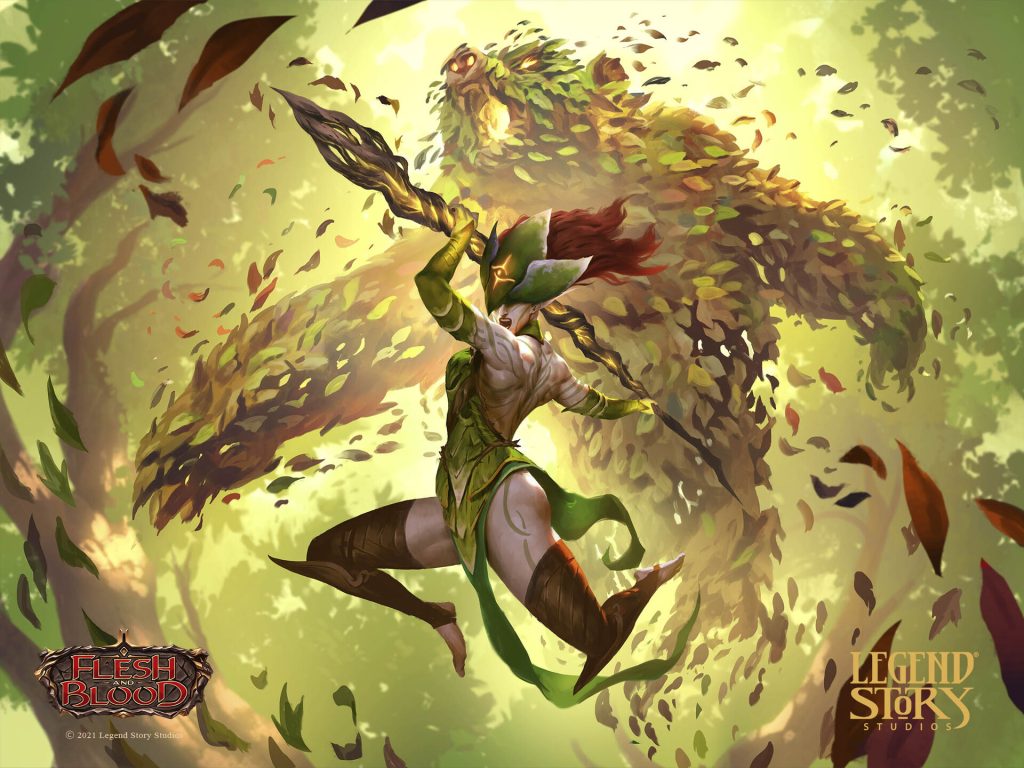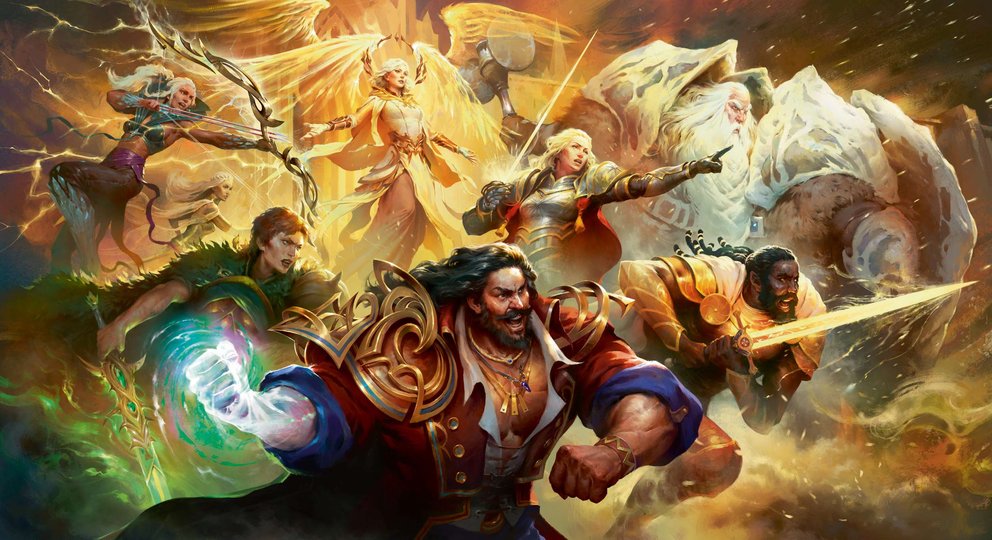Legends, Stories, and Immersive Gameplay

As we learned from Neon Genesis: Evangelion, it’s better to feel something, anything, than live in a world deprived of emotion. Embodying myself into the games I play has been an essential part of this hobby. Some of my greatest memories are walking with my brother down to our friend Mike’s house, where we’d play most tabletop games we could afford.
The hours of Dungeons and Dragons, Mage Knights, Warlord, Dragon Ball Z, Legend of the Five Rings, and Magic: the Gathering have helped shape who I am. Most of my enjoyment stemmed from becoming my characters – winning was always, at most, secondary.
I’ve never played a card game that brought the level of thematic gameplay that Flesh and Blood brings to players around the world. When I saw the inaugural Team Covenant stream of the game, I knew I was in love.
The visceral physicality the game offers through the sheer mechanics of a fully equipped hero in a duel to the end was a breath of fresh air. My last competitive game was Panini’s Dragon Ball Z. It was easy to hear Chris Saban’s voice when battling Piccolo or Vegeta. Now, and especially after watching My Hero Academia, I can hear him yelling out CRIPPLING CRUSH every time I play Bravo.
This added layer of imagination and roleplay makes a game of numbers feel material.
Champion-Style Board State

Flesh and Blood is a champion-style TCG. Similar to DBZ, DBS, Star Wars: Destiny, MTG Commander, and others, FAB makes you the pilot of one of the key characters of Rathe. You’ve donned your equipment and assembled a deck of the various actions your character has prepared for the upcoming fight.
This TCG conceit makes it easier to form attachments to a specific character, class, or talent. Many of us remember the first character we played when learning the game. Several pro players are linked to the heroes they used when achieving glory in a tournament.
Michael Hamilton – Iyslander
Pablo Pintor – Chane, Bound by Shadow
Matthew Foulkes – Briar, Warden of Thorns
I’ll never forget Tyler Horspool’s Calling: Las Vegas victory with Prism, Sculptor of Arc Light. It was an age dominated by the original Shadow Runeblade hero, Chane. But Tyler showed the world what the Light Illusionist could do.
Championing a champion even brings one notoriety without achieving the game’s top titles. Players from around the world have shown us that dedication to a hero brings its own fame.
Ethan Van Sant – Levia, Shadowborn Abomination
Mara Faris – Dromai, Ash Artist
Joshua Lau – Ser Boltyn, Breaker of Dawn
Cayle McCreath – Bravo, Showstopper
I first fell in love with the mechanics and feel of the game. It took me a while to find heroes who I fully connected with. I had to dig into my history of playstyles and competitive desires to eventually land on Bravo and his knack for midrange versatility.
How did you decide which character you would main?
Arms and Armor

Flesh and Blood’s Living Legend system cycles out heroes and their signature weapons after seeing enough success in competitive play. For most of our heroes, this feels correct. Dorinthea’s story begins with her affinity with the Dawnblade. As a warden of the Rosetta, Briar has her Rosetta Thorn tell her pilot precisely what she’s about – fueling an overwhelming mix of physical and arcane damage.
While not directly tied to certain characters except through class and talent restrictions, armor pieces can also symbolize particular heroes. Crown of Seeds and the various Guardian Shields have been etched into the meta-history of the game as Oldhim staples. Bloodsheath Skeleta with Viserai‘s OTK package still haunts the mathematical fairness of my dreams.
For more on this, do yourself a favor and watch Gorganian Tome’s latest video on Objective Correlatives.
Actions and Defense

The cards in the deck really separate the roleplaying ability of Flesh and Blood from any of its competitors.
These cards build the story of Rathe in general and the fight on the table in front of you specifically.
When not carefully blocked, Cranial Crush literally crushes part of the intellect of its victim, nullifying their ability to draw new cards to generate new ideas for their counterattack.
Runic Reclamation shows us Viserai reclaiming his will to live by destroying his foes and increasing his power.
Endless Arrow gives us the iconic shot of dozens of arrows clouding the sky; if the target cannot find sufficient cover or cut through the arrows to go on the offensive, the Ranger will pin them down turn after turn.
The game’s more defensive cards tell their own stories.
Fate Foreseen gives us insight into our hero’s time before the match began. Perhaps they went to a seer to view their future and seek an edge against their opponent. The crystal ball reveals a blow so deadly they wouldn’t be able to recover. But now, with the knowledge of a possible future, they recognize the moment and use the deja vu to carpe diem their way to survive.
Unmovable's extra defensive value and hefty cost help us understand the moment. Your hero needs to pull out all the stops to defend a mighty blow. The look on the card’s primary figure shows us what we’re replicating on the table.
Spectral Shield tokens allow us to go into the magical effects of the game. With Ward 1, these elusive bucklers help to keep their creator alive.
The Future – PvE

We know it’s coming. The social joy of a player vs. environment version of Flesh and Blood is promised to be a fan favorite. If you’re like me, you’re already adding roleplaying aspects to your experience of the game. However, pretending to slide into your chair at a Calling like Shinji into Eva-01 or screaming Crippling Crush when finishing off some poor, armorless Wizard may not be appropriate.
With PvE, though, those moments of table comradery and eccentricity will be a welcome break from grinding constructed games while still enjoying the tales in Rathe.